Building off the success of Railroad Ink comes Railroad Ink Challenge, a new version of the game that keeps the original gameplay and adds a welcome dose of player interaction. Read our Railroad Ink Challenge review to find out what’s new in the game.
Contents
Railroad Ink Challenge Overview
Railroad Ink Challenge introduces several new elements to Railroad Ink’s original gameplay. There are new Route dice, new player boards with Special Buildings, and Goal cards to increase player interaction.
Since Railroad Ink Challenge expands the original rules, we’ll only cover what’s new in this review. If you’re unfamiliar with Railroad Ink’s gameplay, check out our review to learn more.
Similar to Railroad Ink, both editions of Railroad Ink Challenge have the same rules and gameplay. Each, however, has 2 themed expansions unique to the edition.
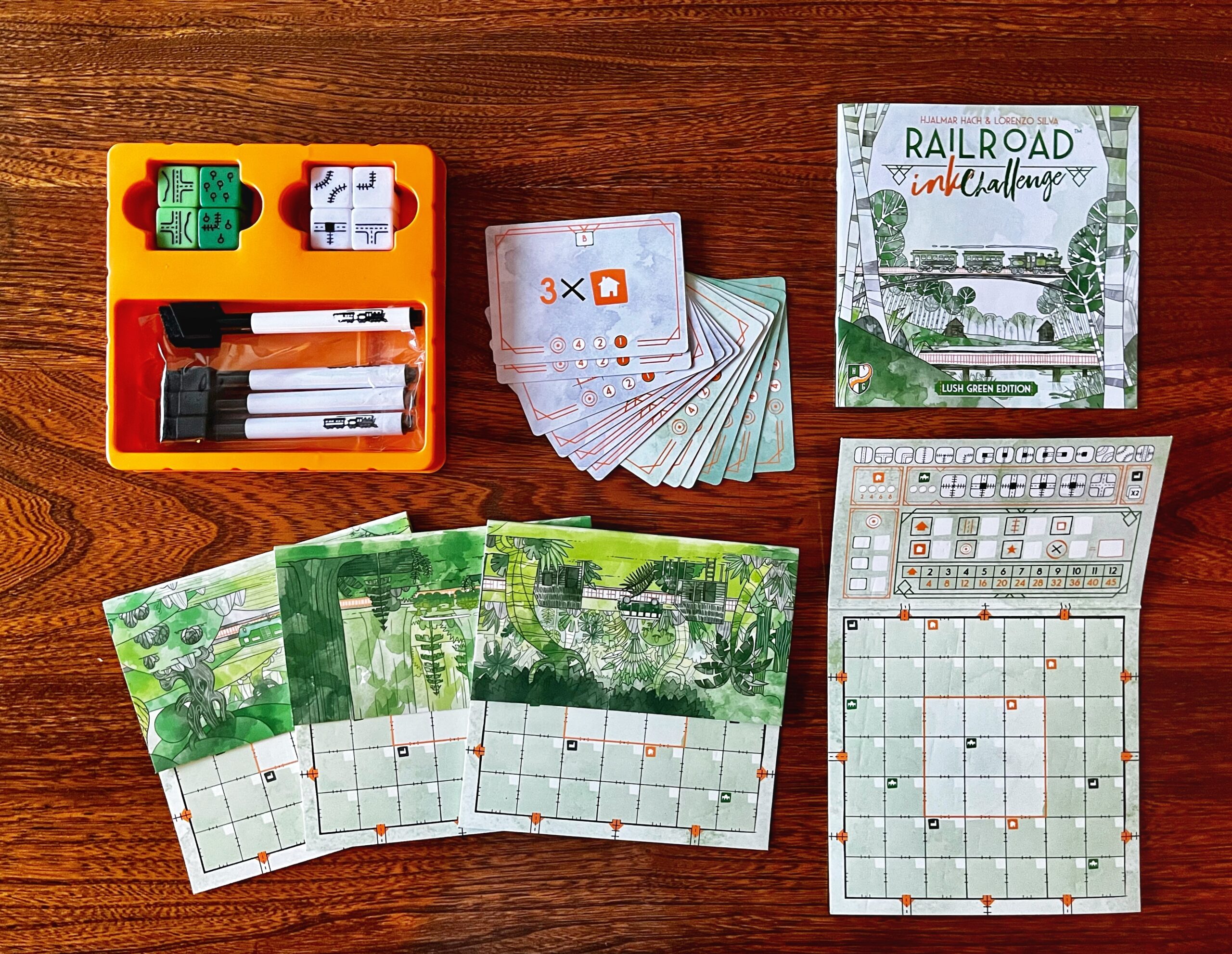
The components in Railroad Ink Challenge: Lush Green Edition. Because of the game’s interaction, the player count has changed to 1 to 4 players.
Route Dice
The Route dice in Railroad Ink Challenge feature the 9 different Routes in the original game and 6 new Routes — 2 T-junctions with stations, 2 dead-end Routes, and 2 double curved Routes.

All 15 types of Routes on the Railroad Ink Challenge dice, with the 6 new Routes outlined in yellow.
Player Boards and Special Buildings
Each edition of Railroad Ink Challenge includes 4 new player boards; these boards are like those in Railroad Ink, but they also have the new Challenge elements, notably the Special Buildings on the grid.
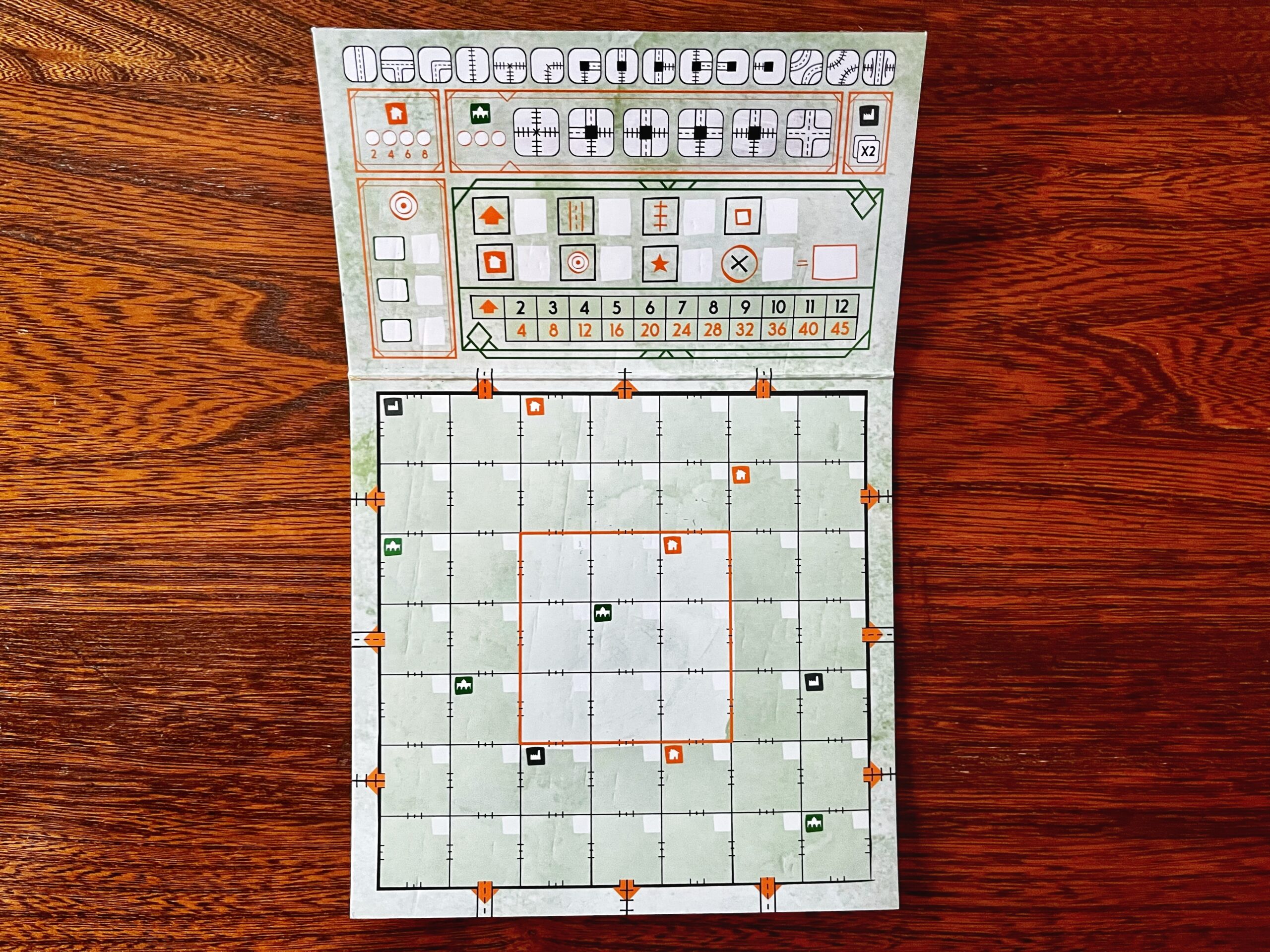
A closer look at the new player board in Railroad Ink Challenge.
There are 3 types of Special Buildings: Factory, Village, and University. Each Building has an effect that’s triggered immediately when you draw a specific kind of Route in its space.
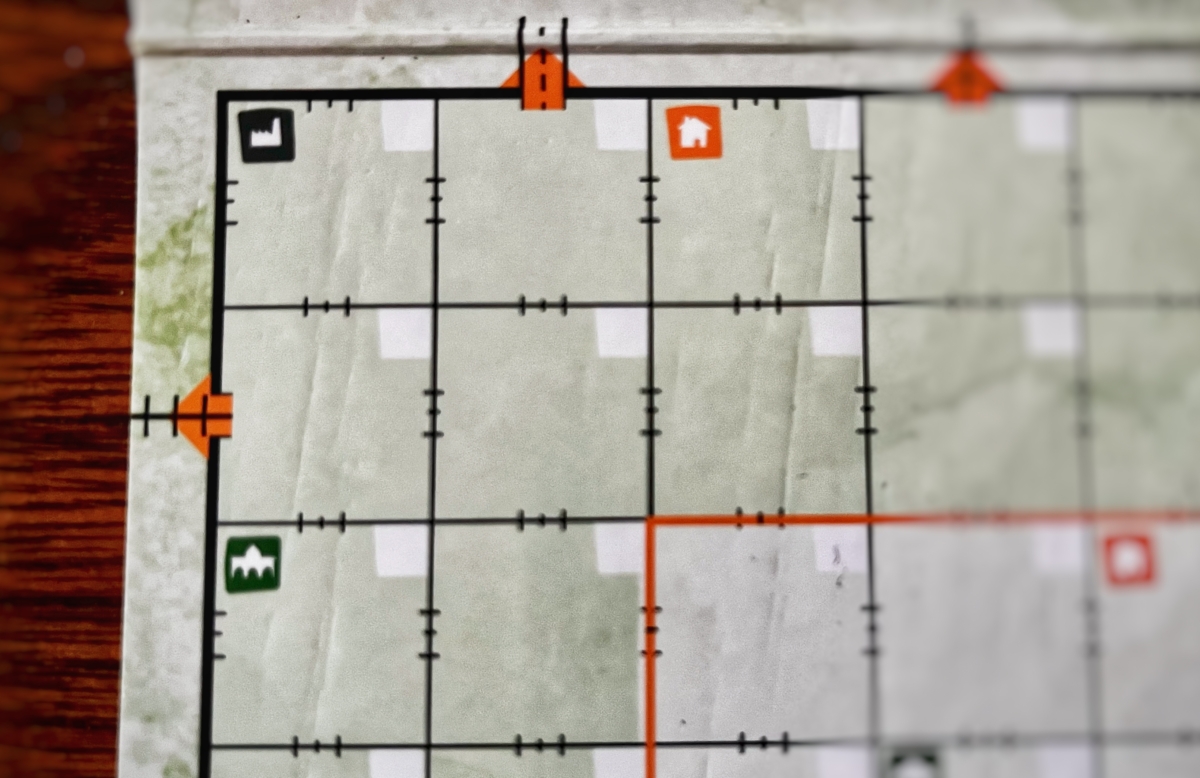
This corner of the player board has a Factory (in grey), a Village (in orange), and a University (in green).
Factory
To trigger a Factory, you must draw a highway or railway Route in its space. Then, you may duplicate the results of any Route die from the round following the usual drawing rules.
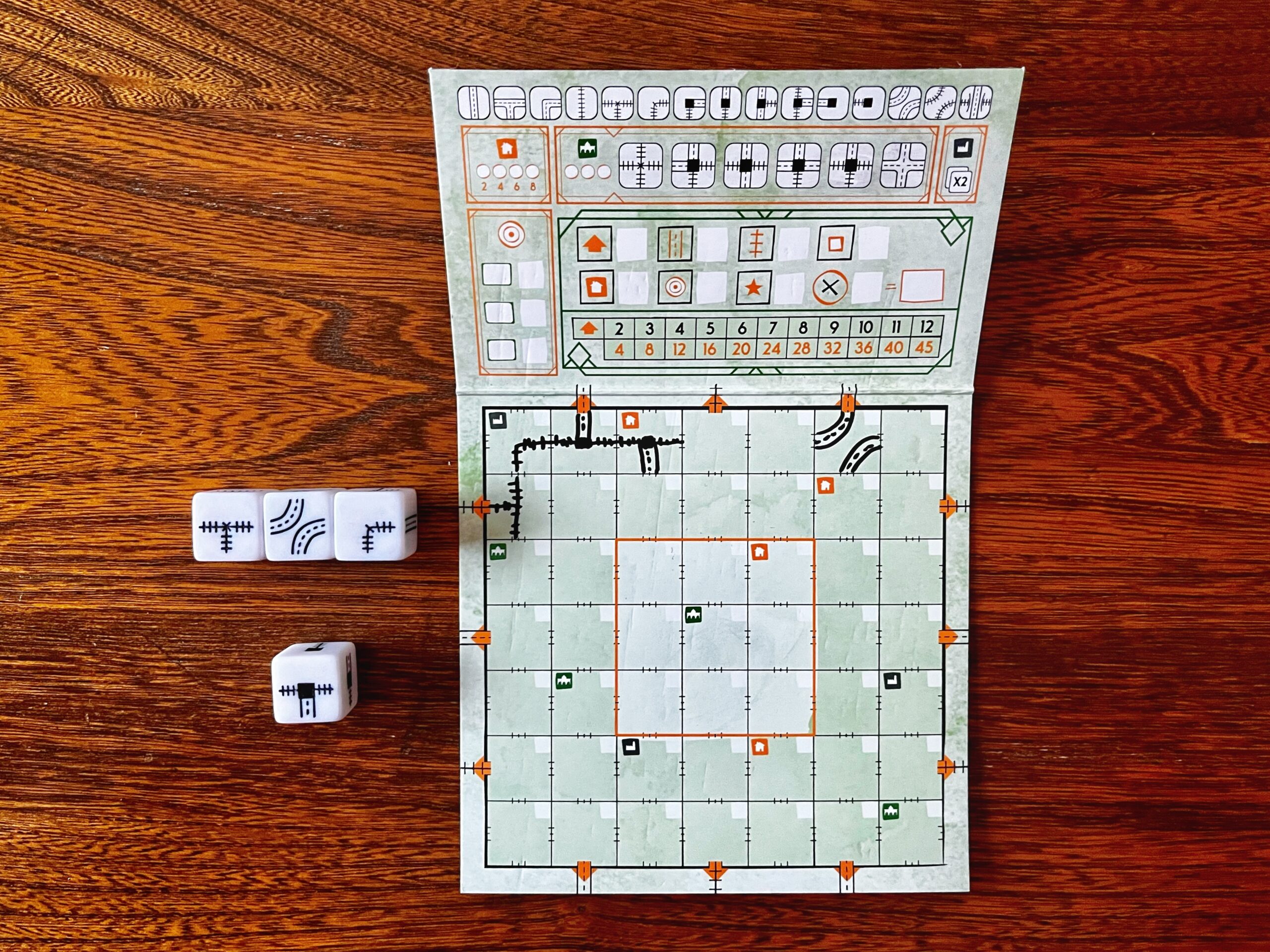
This player drew a Route in a Factory space, so they chose to draw a second T-junction with a station on their board.
Village
The Village special effect scores you points at the end of the game. When you draw a Route with a station in a space with a Village, mark off the leftmost available Village space at the top of your board. At the end of the game, you score points for the highest-valued space you marked.
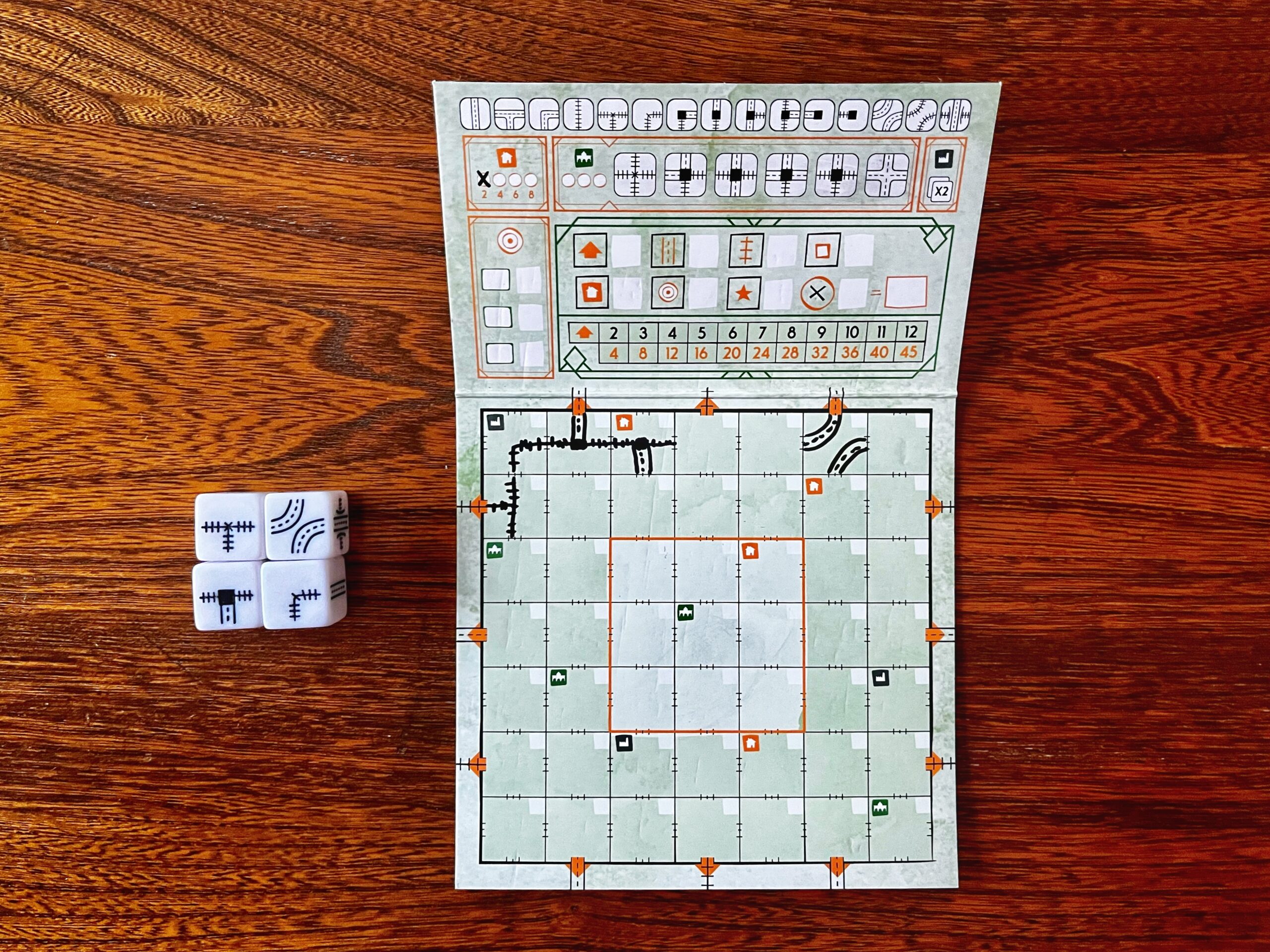
This player used their Factory bonus to add a Route with a station to a Village space. They then mark off the leftmost Village point space at the top of their board.
University
The University’s effect only comes into play after you’ve “activated” 3 of them on your board. To do this, you must draw a highway or railway Route in its space. Then, mark off a University space at the top of your board.
Once you’ve marked off all 3 University spaces, you trigger its ability immediately — to draw 1 Special Route for free. This Special Route doesn’t count towards your once-per-round, thrice-per-game limit.
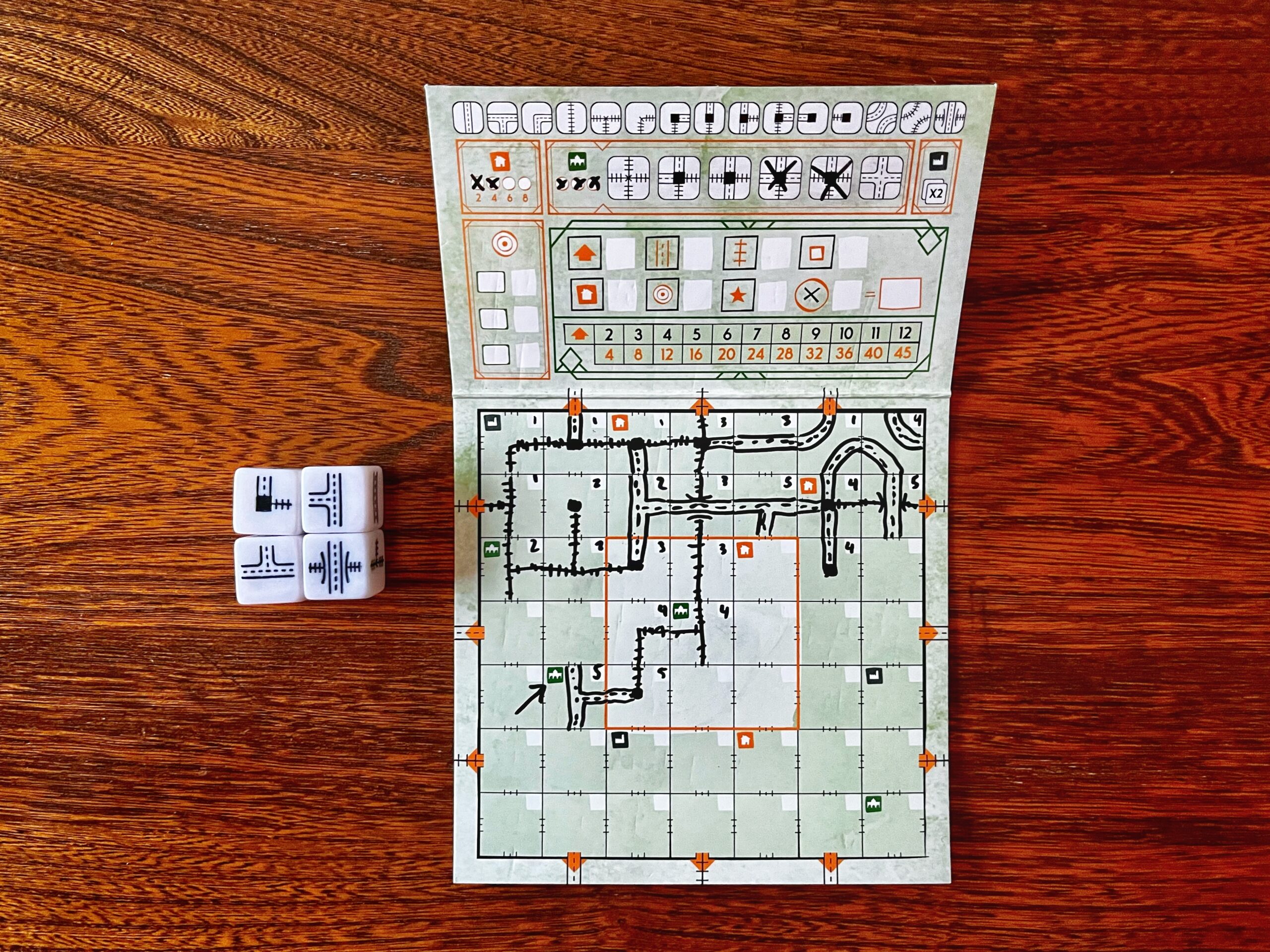
This player marked off their third University space so they may draw a Special Route for free. Their options include any of the 4 Special Routes that have not been already used and crossed off.
Goal Cards
Another new element of Railroad Ink Challenge is Goal cards that inject a level of player interaction into the game since you race to be the first to meet the Goal cards’ objectives.
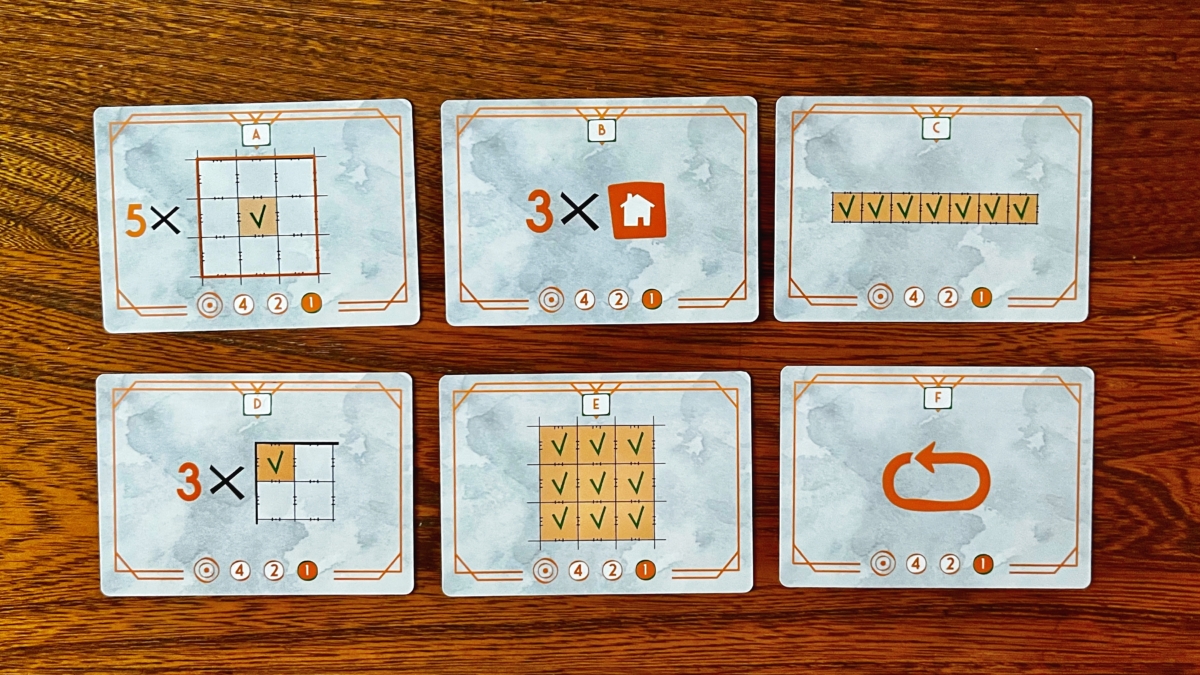
Here are some Goal cards from Railroad Ink Challenge.
When playing with the Goal cards, 3 are randomly chosen for the game. Both editions include 6 Goal cards that are compatible with any Railroad Ink Challenge game, so you may mix and match as you please if you own both.
Lush Green and Shining Yellow also have expansion-specific Goal cards that can be added to your game when playing with their expansions.
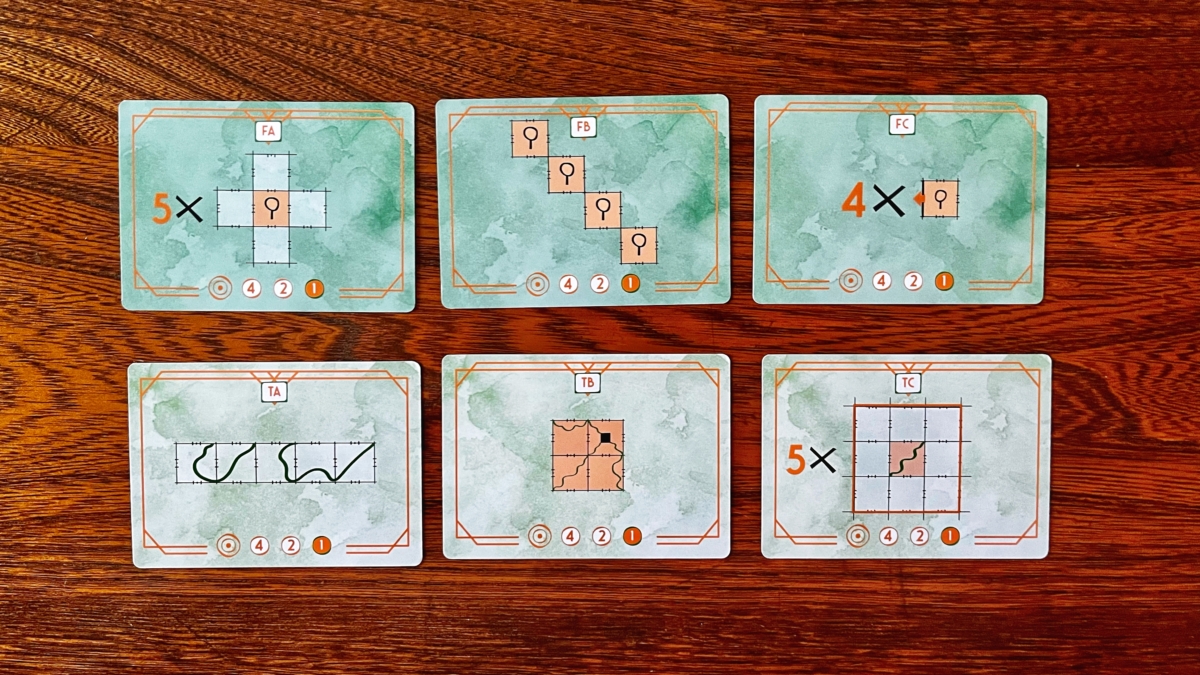
Here are the Goal cards from the Forest and Trail expansions.
In a round, after everyone has drawn their Routes, players check to see if anyone has achieved the Goals. When you do, you score the highest unmarked value of points on the card and note it on your board.
Then, mark off those points on the Goal card; any players who achieve that Goal in later rounds will score fewer points.
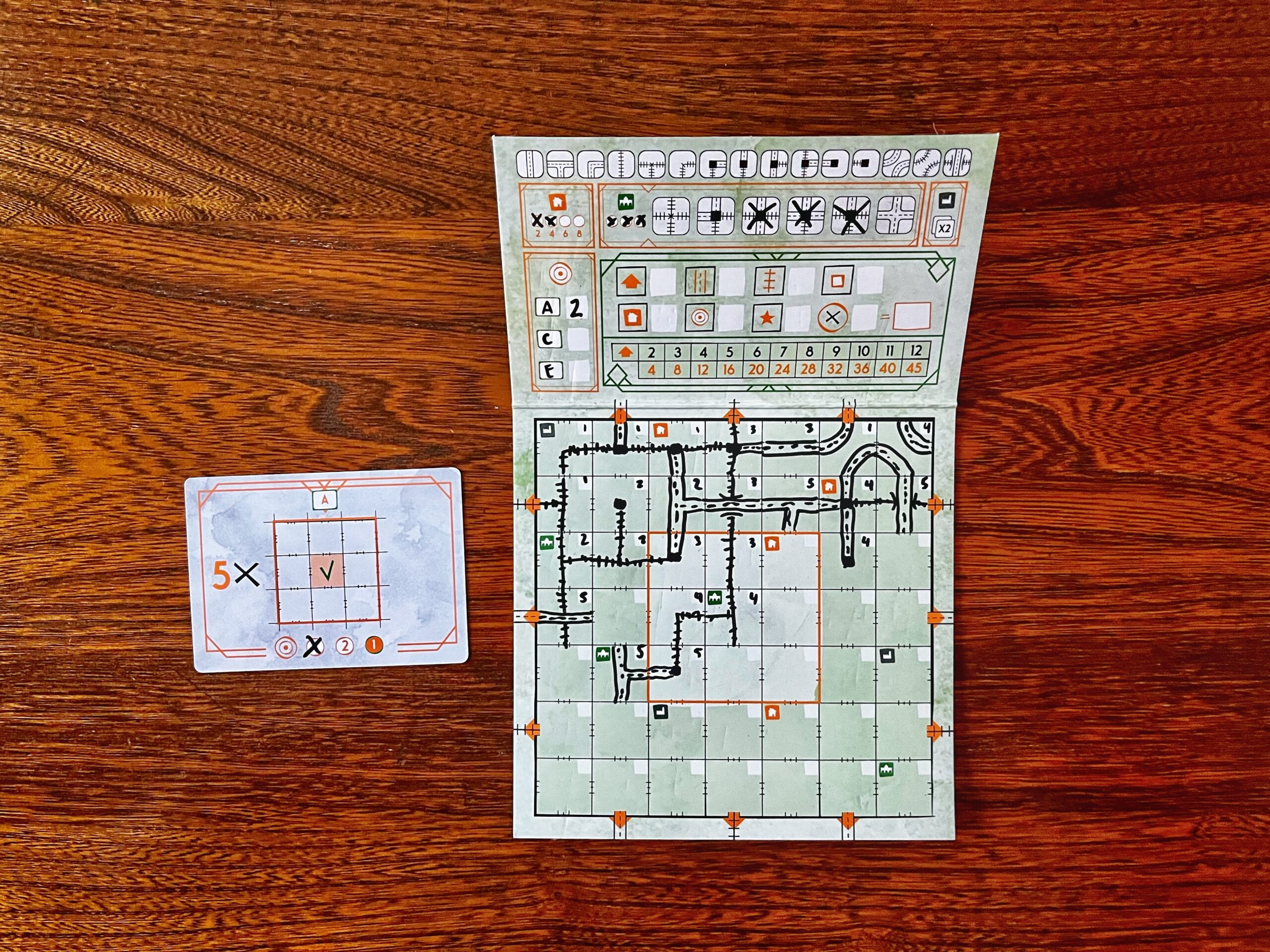
At the end of the fifth round, this player had Routes in 5 central player board spaces. Unfortunately, someone already achieved this in an earlier round, so they scored the second highest value: 2 points. Any other players to meet this objective in future rounds will score 1 point.
Expansions
Each edition of Railroad Ink Challenge includes 2 expansions that can be used in your Challenge or basic Railroad Ink games.
Likewise, expansions from the DeepBlue and BlazingRed editions can be added to your Railroad Ink Challenge games.
Lush Green Edition
Railroad Ink Challenge: Lush Green Edition includes the Forest and Trail expansions.
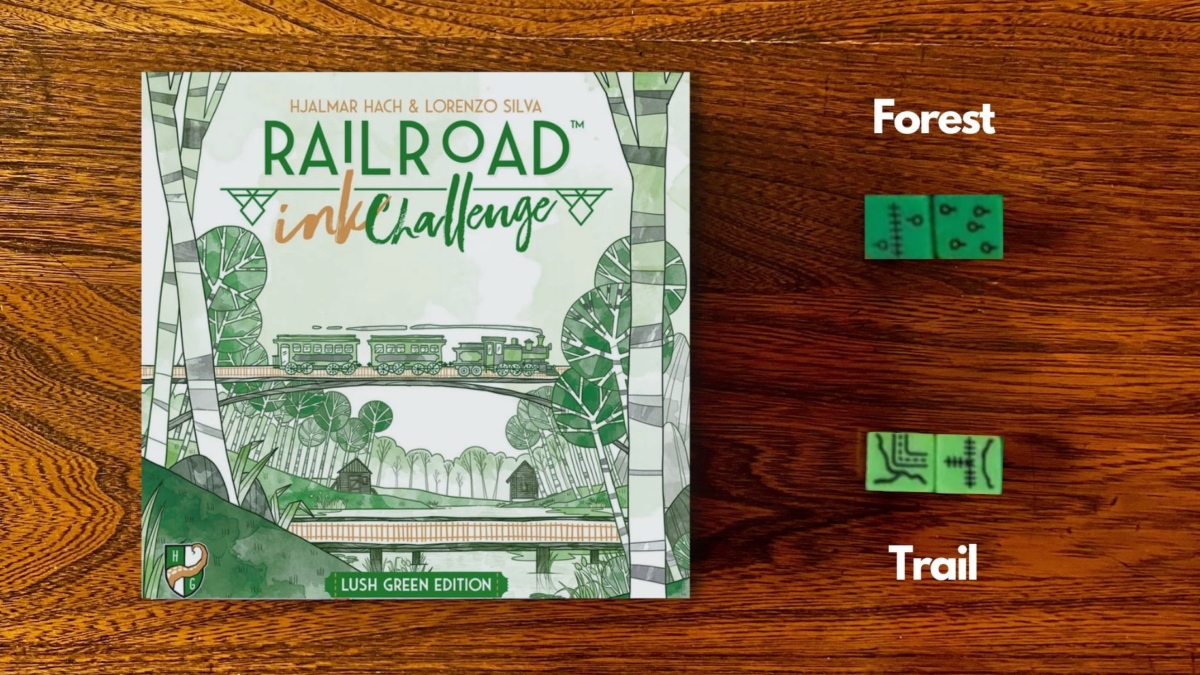
The Forest and Trail expansion dice.
Forest
In this expansion, your goal is to create extensive forests through which your Networks pass.A ‘forest’ is orthogonally adjacent spaces with trees, whether they also have Routes or not.
The Forest expansion dice always feature trees, some on their own and some with Routes.
At the end of the game, you score 2 points for each space in your largest forest and 1 point for each space in your second largest forest.
Trail
The Trail expansion is one of the more difficult ones to implement into your Railroad Ink games.
Your goal in the Trail expansion is to create hiker trails that connect at stations alongside your highway and railway Networks.
Trails travel through the corners of a space; when a trail touches the corner of a space with a station, it automatically extends out diagonally and connects to it.
At the end of the game, your trail Networks and stations score like Exits and Networks do. For each trail Network, count the number of stations it connects.
Find the value on your player board, then score half the points. (For example, a trail that connects 4 stations scores 6 points.)
Shining Yellow Edition
The Desert and Canyon expansions are in Railroad Ink Challenge: Shining Yellow Edition.
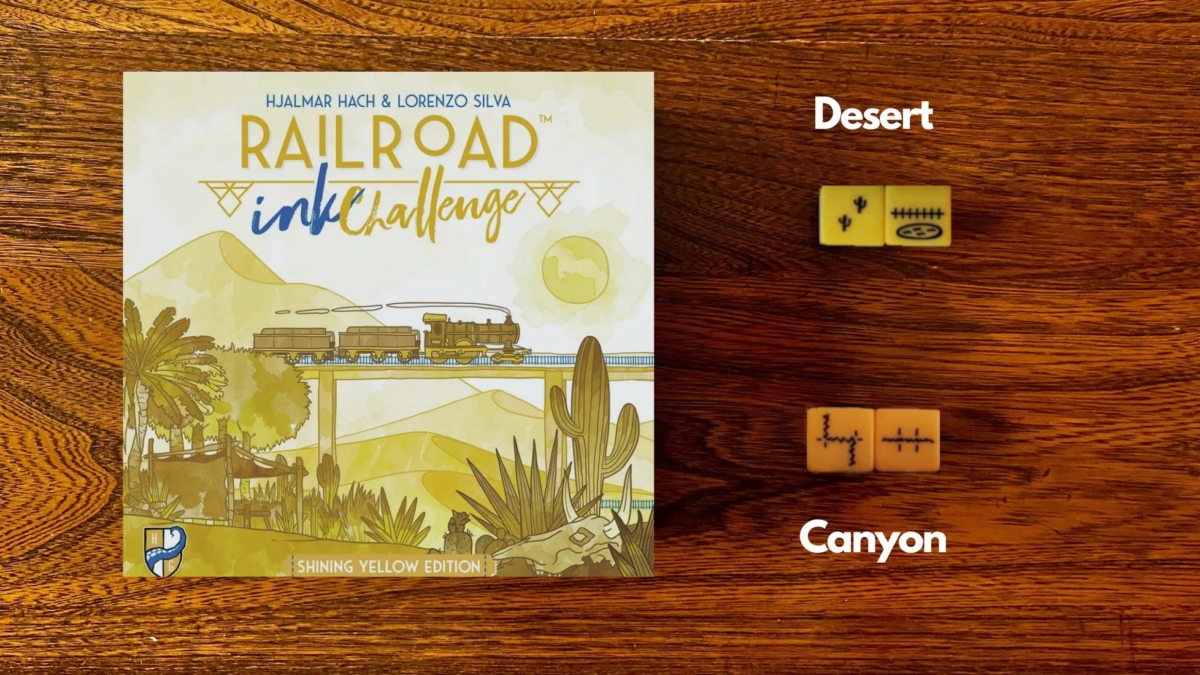
The Desert and Canyon expansion dice.
Desert
In the Desert expansion, your goal is to have as many cacti survive until the end of the game. You do this by ensuring that your cacti are adjacent to a Route with an oasis.
If the sun face of a Desert die is rolled during a round, then a heat wave has occurred and you must erase every cactus that is not adjacent to an oasis.
You can prevent the sun’s destruction by marking off a Special Route.
At the end of the game, you score 2 points for every surviving cactus on your board.
Canyon
This expansion adds another Route of sorts: the canyon — and your goal is to create the longest stretch of canyon segments to score big points.
The Canyon expansion dice feature predetermined patterns of various canyon segment configurations. When you draw these, you do so along the edge of a space.
If you’d like to draw a Route that touches or crosses a canyon segment, you must spend a Bridge Point. (Every player has 12 Bridge Points for the game.)
At the end of the game, you score 1 point per segment (not space!) in your longest canyon Network.
You also score 2 points for each canyon Network with both ends connecting to the edge of your board.
Railroad Ink Challenge Review
I was already a fan of the original Railroad Ink game, so it’s no surprise I also like the Challenge version. However, I didn’t expect Railroad Ink Challenge to be my new favorite way to play.
What I enjoy most about Railroad Ink Challenge is the extra layer of strategy and player interaction it adds to the original gameplay.
Competing to score first on the Goal cards is a lot of fun, and even though the difference in points between first and third isn’t that much, those few points could win or lose you the game.
I also love the addition of the Special Buildings and their effects. The combo-ing you can trigger with the Special Buildings (especially the Factory) reminds me of more strategic roll-and-write games — and I love it!
Each round becomes more tense as you try to maximize your points and chain together different Building effects to get the most out of the dice.
Lush Green and Shining Yellow Expansions
While I found the expansions in the original RailroadInk editions were equally good, this isn’t the case with Railroad Ink Challenge.
For me, the Lush Green Edition is superior to Shining Yellow.
The Forest expansion is my favorite of those included in the Railroad Ink and Challenge base games. I like that you have more Route options with the dice, and it’s a fun challenge to try to make large forest areas.
The Trail expansion falls significantly lower; I enjoyed the idea of it (having a new type of Route and trying to build out its Network), but in practice, it was a mess.
Each space is so crowded with information that it is hard to distinguish what is what, especially if you use the thicker dry-erase markers in the game.
The Canyon expansion has a similar — if not worse — problem to the Trail expansion: your player board quickly gets very cluttered.
It also becomes quite a nightmare to erase parts of your canyon segments for your Route bridges.
RailroadInk has never been a visually elegant game, but the Trail and Canyon expansions only make it worse.
The Desert expansion didn’t win me over either; I liked how it introduced a push your luck element to RailroadInk, but it was far too swingy and unpredictable.
What’s more, the points you could score at the end of the game didn’t feel like they were worth the effort.
Final Thoughts
While I didn’t enjoy all the new expansions, RailroadInkChallenge is still a real winner. I love how the Goal cards introduce an element of player interaction and the added layer of strategy the Special Buildings give the game.
The original Railroad Ink is still in my collection because I prefer to play it with non-gamers, but for everyone else, I will always choose RailroadInkChallenge.

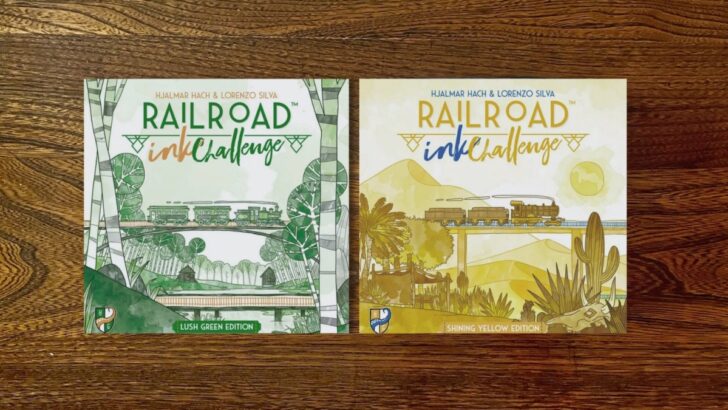
Ticket to Ride: New York Review — Little Plastic Taxis
Saturday 21st of January 2023
[…] to Ride. Its rules and gameplay are simple, but it works well for those times when you want a route-building game that won’t burn your brain or take too […]